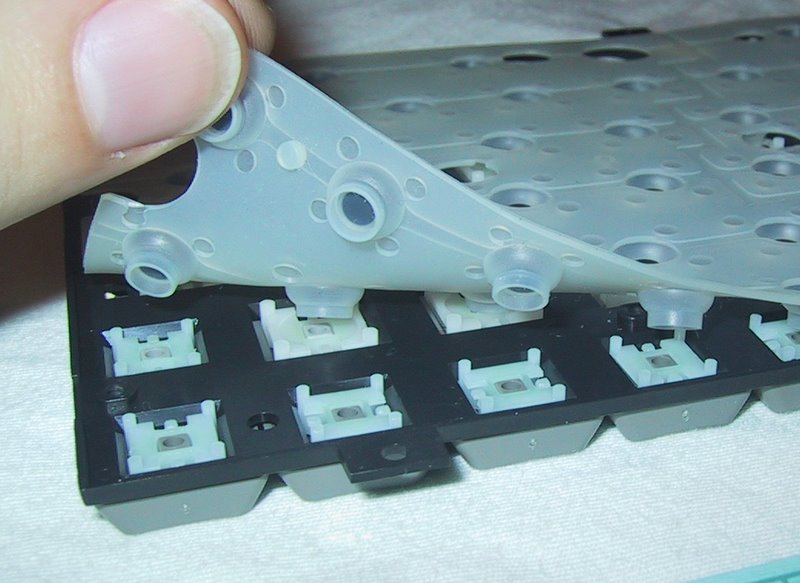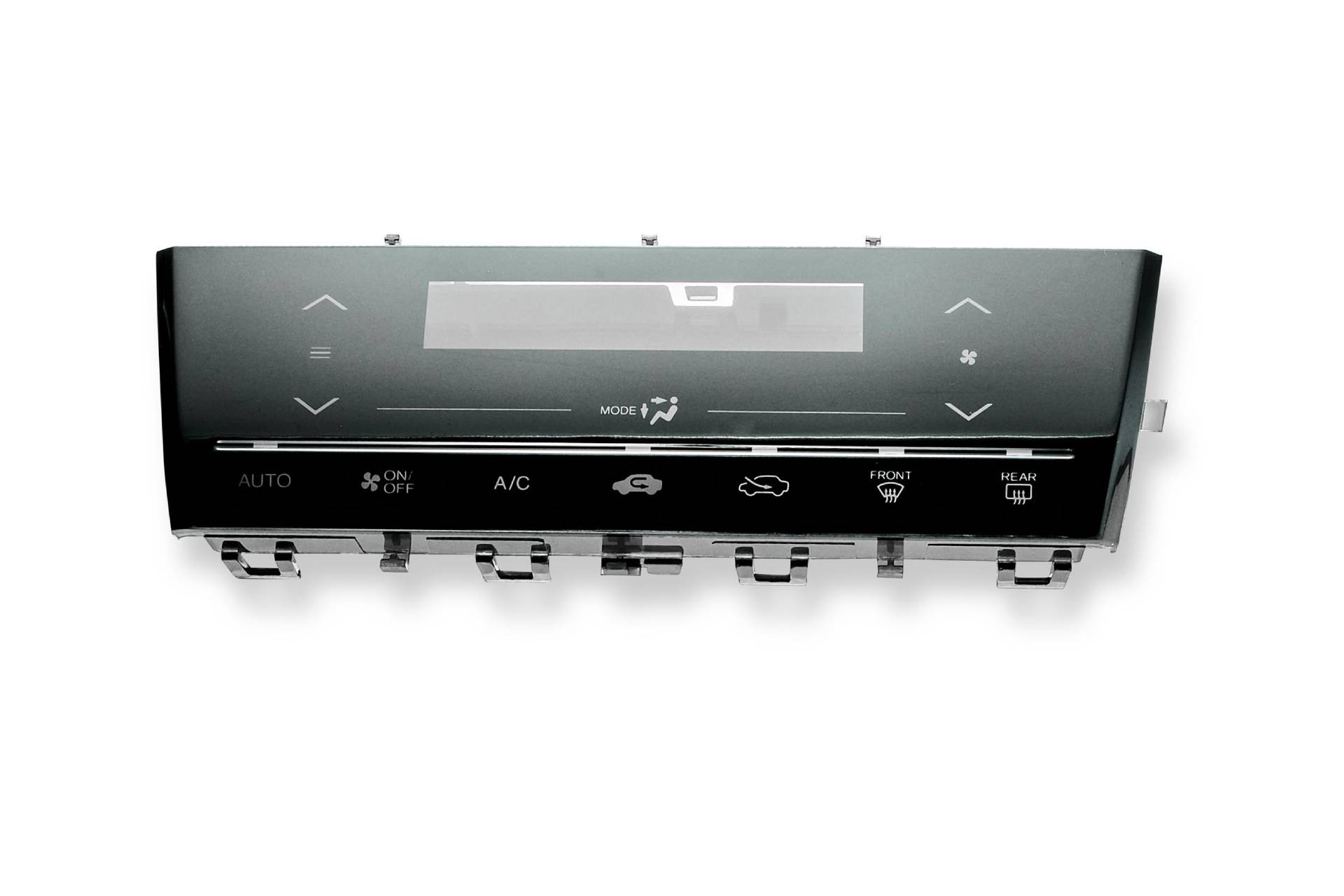Choosing a domestic membrane switch manufacturer can cut down on lead times and transportation costs.
Choosing a domestic membrane switch manufacturer can cut down on lead times and transportation costs.
Blog Article
What to Look for When Choosing a Membrane Switch for Your Task
When you're choosing a membrane button for your project, a number of key aspects come right into play. You'll need to believe about the materials, design, and how well it lines up with your brand.
Understanding Membrane Change Parts
When you plunge right into the globe of membrane switches, it's necessary to comprehend the crucial elements that make them function. The switch usually includes 3 main layers: the visuals overlay, the spacer layer, and the circuit layer. The visuals overlay provides the visual user interface, showing switches and symbols you need for simple navigating. Below that, the spacer layer guarantees there's sufficient distance in between the circuit and the overlay, allowing the switch to turn on without consistent stress.
The circuit layer, usually made from published conductive inks, develops the electric pathways. When you press a switch, the circuit closes, sending out a signal to the tool. Understanding exactly how these layers interact aids you select a membrane layer switch that's dependable and fits your project demands. Pay attention to the density and material of each layer, as these variables influence durability and performance in different settings.
Material Selection and Its Effect
Choosing the appropriate products for your membrane layer button can substantially affect its performance and durability. The selection of substrate, generally polyester or polycarbonate, influences resilience and versatility. Polyester is much more abrasion-resistant, while polycarbonate uses better quality and stamina.
Following, take into consideration the adhesive. It requires to hold up against ecological elements like dampness and temperature modifications. A strong adhesive warranties that your membrane switch remains intact over time.
Don't ignore the graphic overlay. The printing technique used, whether silkscreen or digital, influences the button's looks and long life. High-grade inks will stand up to fading and scraping, maintaining a specialist look.
Finally, consider ecological problems. If your device will be exposed to extreme chemicals or extreme temperatures, choose products developed to endure these obstacles. Your choices in products will eventually figure out the switch's integrity and user fulfillment.
Style Factors To Consider for User Experience
Choosing the appropriate materials lays the structure for an effective membrane button, yet the design likewise plays a significant role in individual experience. You'll wish to reflect on how the layout affects functionality (membrane switch manufacturer). Keep switches and icons intuitive and well-spaced, making it simple for customers to browse without complication

Color and contrast are likewise essential; guarantee that your layout is visually attractive but still useful. High comparison aids users quickly determine buttons, especially in low-light problems.
Lastly, review the overall aesthetic. A smooth and modern-day design can boost customer assumption and make your item much more appealing. Balancing capability with an engaging design will certainly result in a much better customer experience and inevitably, a much more successful product.

Ecological Variables and Durability
When choosing a membrane layer switch, you need to think about how it'll execute in various atmospheres. Aspects like temperature resistance, moisture and chemical direct exposure, and mechanical wear can greatly impact its longevity. Understanding these aspects will certainly help you pick a button that takes on your particular problems.
Temperature Resistance Requirements
As ecological problems can differ widely, recognizing temperature resistance is essential for guaranteeing the sturdiness of your membrane switch. You need to review the temperature range in which your tool will certainly run. High temperature levels can cause products to deteriorate, resulting in failing, while low temperatures may make parts brittle and vulnerable to breaking. See to it to inspect the specs of the products used in the button, like the adhesive and overlay, as they straight influence performance. It's likewise smart to ponder prospective temperature changes and their results on the switch's dependability. By selecting a membrane layer button with ample temperature resistance, you'll improve its lifespan and preserve performance in tough environments. Pick carefully to prevent expensive replacements down the line.

Wetness and Chemical Exposure
Wetness and chemical direct exposure can significantly affect the efficiency and long life of your membrane switch, so it's important to comprehend the environment in which it will be utilized. Constantly seek advice from the manufacturer's specs for chemical compatibility to ensure your membrane layer switch maintains its capability over time. By prioritizing dampness and chemical resistance, you can enhance the toughness of your switch in tough atmospheres.
Mechanical Deterioration
While you may prioritize features like aesthetics and functionality in your membrane button, mechanical wear and tear can greatly impact its performance in time. Consider exactly how frequently the switch will be made use of and the setting it'll be in. Frequent pressing can cause destruction of materials, triggering problems like responsive feedback loss or also switch failure. Look for models with durable styles, such as those with safety overlays that stand up to scratches and wear. Furthermore, look for specifications on cycle life, which browse this site shows the number of presses the button can deal with before revealing indications of wear. Picking a durable switch assurances durability and integrity, stopping pricey substitutes and downtime in your project. Constantly factor in resilience alongside visual look at more info appeals and capability for peak performance.
Personalization Options for Branding
When it comes to branding your membrane layer button, modification alternatives are key. You can select layout components and colors that mirror your brand name, in addition to specific logo positioning and dimension to enhance visibility. Furthermore, picking the ideal products and textures can elevate the overall appearance and really feel, making your item stick out.
Layout Elements and Shades
A wide variety of layout aspects and colors can make your membrane switch not simply useful however additionally visually appealing, enhancing your brand name identity. When selecting colors, think about your brand name's palette; they should reverberate with your audience and stimulate the appropriate emotions. You can likewise discover different finishes like matte or shiny to produce various visual effects. Do not neglect concerning structures; including a tactile aspect can improve user experience and make your button stand apart. Take into consideration integrating customized graphics or patterns that straighten with your brand message. By thoughtfully choosing design aspects and colors, you not only create an item that looks fantastic yet additionally enhances your branding regularly and effectively.
Logo Design Positioning and Dimension
After finalizing your design elements and shades, the next action is to focus on logo design placement and size. Your logo is a crucial aspect of your branding, so you'll want it to stand apart without frustrating other design elements. Assess where your logo will be most visible and impactful; usual positionings include the top or facility of the button.
Do not forget to consider just how the logo design straightens with customer interaction. This focus to information will certainly enhance both functionality and brand name identity in your job.
Material and Texture Alternatives
Picking the ideal products and appearances for your membrane switch can significantly enhance both its functionality and visual appeal. You'll wish to evaluate options like polyester or polycarbonate, as they provide sturdiness and resistance to wear. The appearance of the surface area likewise plays a crucial function; smooth coatings provide a sleek look, while textured surfaces can enhance hold and tactile feedback.
Customizing the products and structures allows you to show your brand identification effectively. You could select a matte finish to convey class or a glossy appearance for a modern-day touch. Do not ignore color options, as vivid hues can make your button stand out, while soft tones can develop a much more classy look
Cost vs. Quality: Finding the Right Equilibrium
When you're taking care of the options for membrane layer buttons, balancing price and high quality can really feel overwhelming. You want to ensure that you're obtaining a reliable item without damaging the financial institution. Begin by determining your task's details requirements. Are you focusing on toughness or aesthetics? A lower-cost button could save you money upfront, but if it jeopardizes capability, you could encounter higher replacement costs later.
Look for makers that use a good mix of cost and high standards. Study their reputation and consumer testimonials to gauge reliability. Often, spending a bit extra in quality materials can conserve you from future frustrations.
Likewise, think about the lasting performance and service warranty alternatives. A slightly more expensive switch with a strong guarantee might confirm to be a smarter financial investment. Eventually, it's regarding locating that pleasant area where you satisfy your budget while assuring your project's success.
Checking and Quality Guarantee Protocols
While you could locate the best membrane button layout, assuring its high quality via rigorous screening protocols is essential for long-term success. Beginning by verifying that the supplier adheres to sector standards, such as IPC/WHMA-A -620, to ensure a trustworthy item. membrane switch manufacturer. You'll wish to look for comprehensive screening methods, consisting of environmental, mechanical, and electric evaluations
Make sure the switches undergo toughness testing, simulating real-world use to determine any type of potential failings. Focus on the manufacturer's high quality assurance procedure, which ought to include regular evaluations and audits.

Don't forget to ask click to read for samples and perform your own tests to confirm compatibility with your project. Take into consideration just how usually the producer updates their methods; development in screening can lead to enhanced high quality. By prioritizing these testing and high quality guarantee methods, you'll increase the probability of an effective and sturdy membrane layer switch for your application.
Regularly Asked Concerns
The length of time Does a Membrane Layer Switch Typically Last?
A membrane layer switch usually lasts anywhere from 1 to 10 million cycles, depending on use and ecological elements. You'll wish to take right into account your specific requirements to assure it satisfies your long life demands efficiently.
Can Membrane Layer Switches Over Be Fixed if Damaged?
Yes, you can sometimes repair membrane buttons if they're damaged, however it usually depends upon the level of the damages. Small concerns might be reparable, while a lot more significant damage generally requires replacement for correct performance.
What Are the Common Applications for Membrane Buttons?
Membrane buttons are generally used in devices, clinical devices, and vehicle controls. You'll find them in consumer electronic devices, commercial tools, and also gaming consoles. Their flexibility makes them optimal for various individual interfaces and environments.
Exist Details Qualifications for Membrane Layer Switches?
Yes, there specify accreditations for membrane buttons. Look for UL, CE, and RoHS accreditations to assure security and compliance. These qualifications indicate the switch satisfies sector standards for quality and ecological safety.
How Do I Guarantee Appropriate Installment of a Membrane Change?
To assure appropriate installment of a membrane switch, clean the surface extensively, align it thoroughly, and use also pressure. Adhere to supplier standards for glue curing time to make the most of sturdiness and functionality.
Final thought
When picking a membrane button for your task, maintain these essential elements in mind: prioritize resilient materials, focus on straightforward style, and take into consideration personalization for your brand. By meticulously assessing these aspects, you'll assure your membrane button not just fulfills your task requires but additionally enhances customer experience and mirrors your brand identity effectively.
Report this page